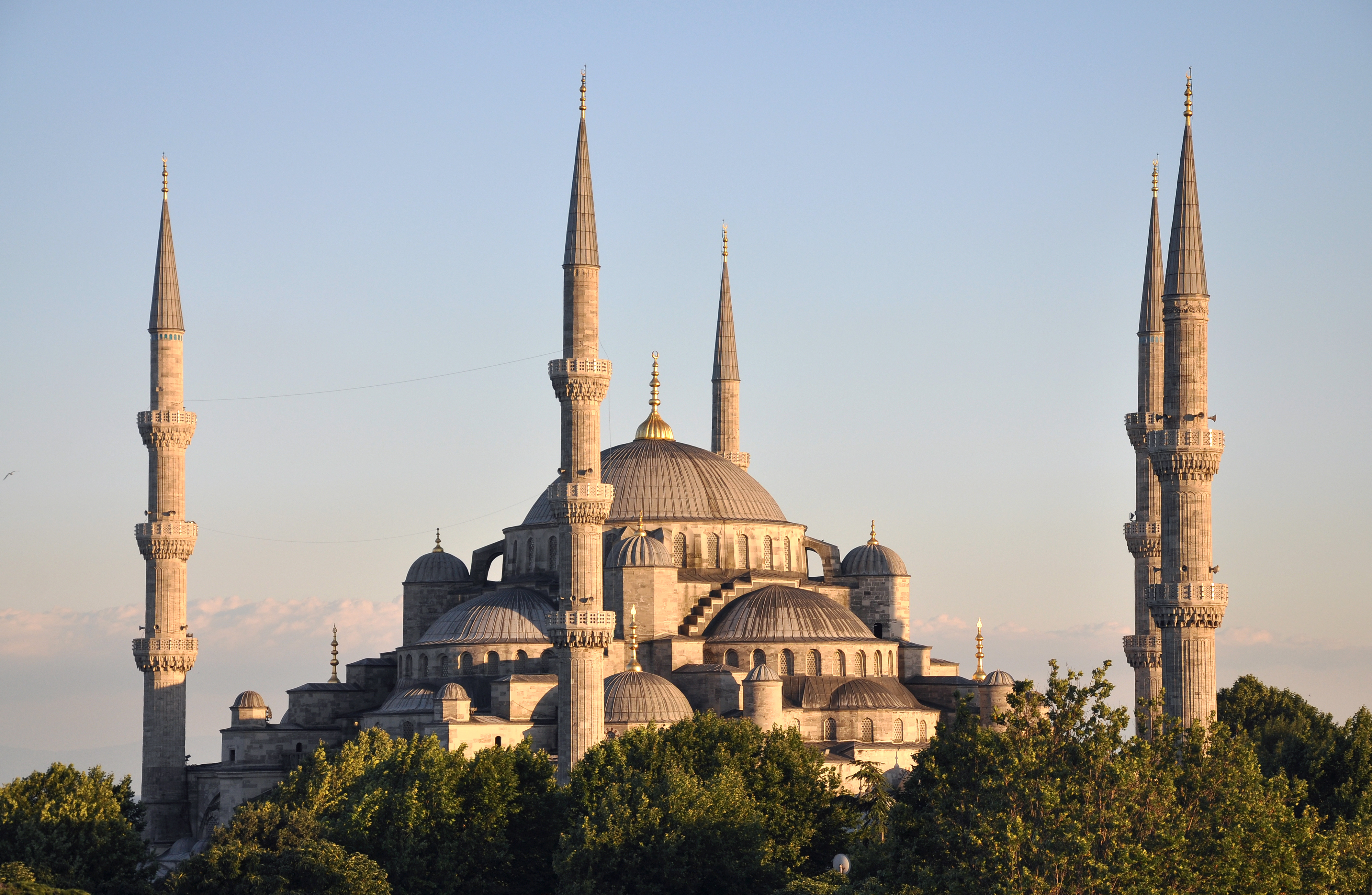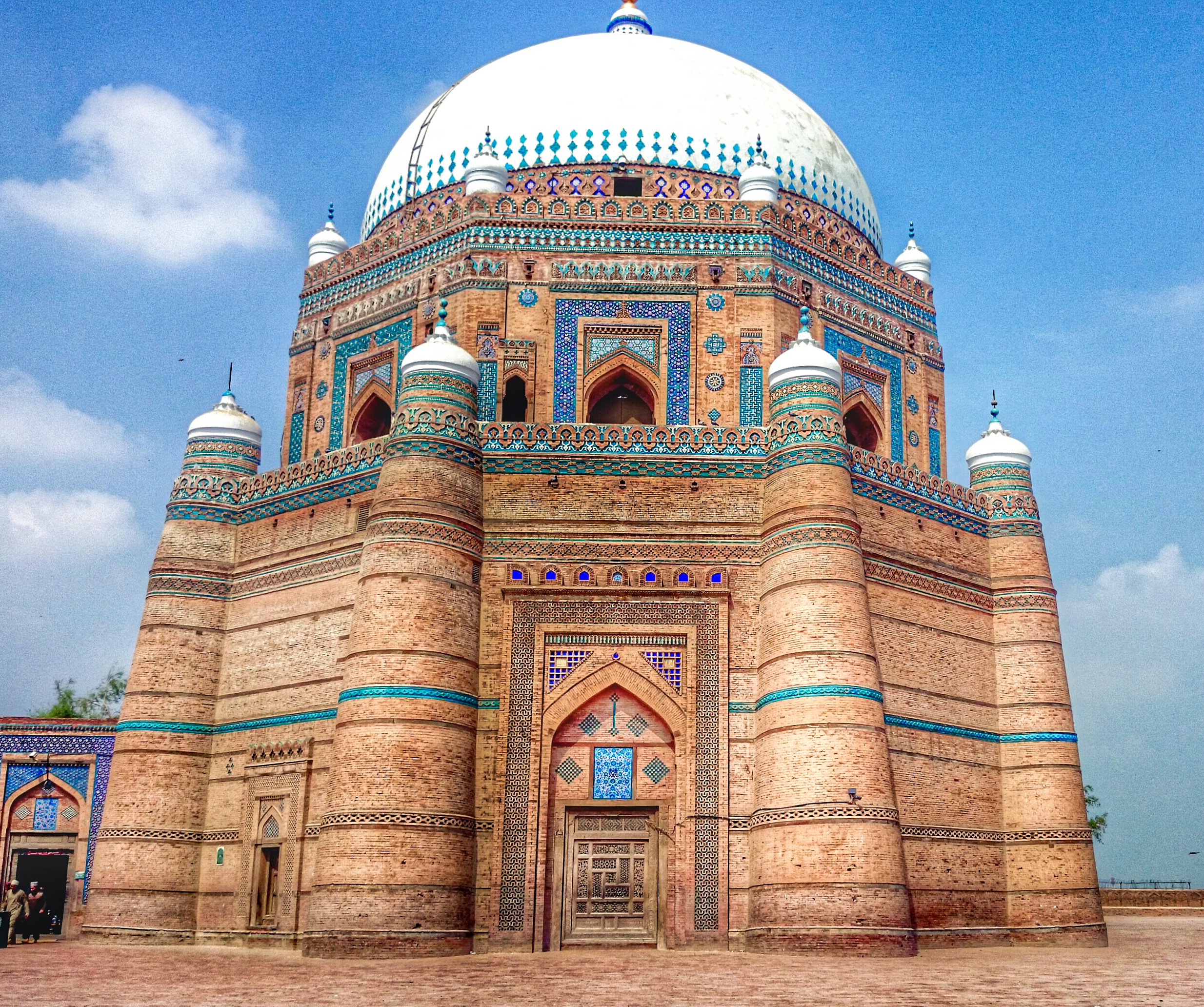|
Imamshah Bawa Dargah
Imamshah Bawa Dargah (Urdu امام شاہ باوا درگاہ) is famous Muslim sufi Dargah complex in Pirana near Ahmedabad city in India. Pir Imam Shah Bawa founded the Satpanth Satpanth is a Sanskrit term used initially by Nizari Isma'ilis and Ismaili Sufis to identify their faith formed over 700 years ago by Pir Sadardin (1290-1367 CE). Although the term is today used mainly by its subgroup formed in the 15th century b ... (true path) faith around 600 years ago. He taught tolerance at the universality of religions until 1931, the complex was a private property belonging to the Saiyeds direct decedents of Imamshah Bawa. There is one old Masjid also existed in the complex. Interfaith harmony Imamshah Bawa Dargah attracted devotees from religions other than Islam and Hinduism too. All 18 communities living in Pirana village, belonging to different castes and religions, are devotees of Imam Shah Bawa. References Mosques in Ahmedabad Monuments of National Importance i ... [...More Info...] [...Related Items...] OR: [Wikipedia] [Google] [Baidu] |
Ahmedabad
Ahmedabad ( ; Gujarati: Amdavad ) is the most populous city in the Indian state of Gujarat. It is the administrative headquarters of the Ahmedabad district and the seat of the Gujarat High Court. Ahmedabad's population of 5,570,585 (per the 2011 population census) makes it the fifth-most populous city in India, and the encompassing urban agglomeration population estimated at 6,357,693 is the seventh-most populous in India. Ahmedabad is located near the banks of the Sabarmati River, from the capital of Gujarat, Gandhinagar, also known as its twin city. Ahmedabad has emerged as an important economic and industrial hub in India. It is the second-largest producer of cotton in India, due to which it was known as the ' Manchester of India' along with Kanpur. Ahmedabad's stock exchange (before it was shut down in 2018) was the country's second oldest. Cricket is a popular sport in Ahmedabad; a newly built stadium, called Narendra Modi Stadium, at Motera can accommodate ... [...More Info...] [...Related Items...] OR: [Wikipedia] [Google] [Baidu] |
Satpanth
Satpanth is a Sanskrit term used initially by Nizari Isma'ilis and Ismaili Sufis to identify their faith formed over 700 years ago by Pir Sadardin (1290-1367 CE). Although the term is today used mainly by its subgroup formed in the 15th century by his grandson Pir Imam Shah (1430-1520 CE) which itself consists of various sub-sects, and differs from the mainstream Nizari Khojas in that they reject the Aga Khan as their leader and are known more commonly as Imamshahi. Uniquely, the term ''Satpanth'' has been historically used by Ismailis that claim to be Muslim, as well as by adherents of subgroups that claim to be Hindus. There are villages in Gujarat which are totally Satpanthi such as Pirana near Ahmedabad where Imam Shah is buried. Satpanthi ''dargahs'' are known to be venerated with a stark contrast in the devotees, with outward Muslims who may wear a hijab, and outward Hindus wearing traditional garb such as the sari. Satpanth can be described as a synthesis of Hinduism and I ... [...More Info...] [...Related Items...] OR: [Wikipedia] [Google] [Baidu] |
Mosques In Ahmedabad
A mosque (; from ar, مَسْجِد, masjid, ; literally "place of ritual prostration"), also called masjid, is a place of prayer for Muslims. Mosques are usually covered buildings, but can be any place where prayers ( sujud) are performed, including outdoor courtyards. The first mosques were simple places of prayer for Muslims, and may have been open spaces rather than buildings. In the first stage of Islamic architecture, 650-750 CE, early mosques comprised open and closed covered spaces enclosed by walls, often with minarets from which calls to prayer were issued. Mosque buildings typically contain an ornamental niche ('' mihrab'') set into the wall that indicates the direction of Mecca (''qiblah''), ablution facilities. The pulpit ('' minbar''), from which the Friday (jumu'ah) sermon (''khutba'') is delivered, was in earlier times characteristic of the central city mosque, but has since become common in smaller mosques. Mosques typically have segregated spaces for men a ... [...More Info...] [...Related Items...] OR: [Wikipedia] [Google] [Baidu] |
Monuments Of National Importance In Gujarat
A monument is a type of structure that was explicitly created to commemorate a person or event, or which has become relevant to a social group as a part of their remembrance of historic times or cultural heritage, due to its artistic, historical, political, technical or architectural importance. Some of the first monuments were dolmens or menhirs, megalithic constructions built for religious or funerary purposes. Examples of monuments include statues, (war) memorials, historical buildings, archaeological sites, and cultural assets. If there is a public interest in its preservation, a monument can for example be listed as a UNESCO World Heritage Site. Etymology It is believed that the origin of the word "monument" comes from the Greek ''mnemosynon'' and the Latin ''moneo'', ''monere'', which means 'to remind', 'to advise' or 'to warn', however, it is also believed that the word monument originates from an Albanian word 'mani men' which in Albanian language means 'remembe ... [...More Info...] [...Related Items...] OR: [Wikipedia] [Google] [Baidu] |
Indo-Islamic Architecture
Indo-Islamic architecture is the architecture of the Indian subcontinent produced by and for Islamic patrons and purposes. Despite an initial Arab presence in Sindh, the development of Indo-Islamic architecture began in earnest with the establishment of Delhi as the capital of the Ghurid dynasty in 1193. Succeeding the Ghurids was the Delhi Sultanate, a series of Central Asian dynasties that consolidated much of North India, and later the Mughal Empire by the 15th century. Both of these dynasties introduced Persianate architecture and art styles from Western Eurasia into the Indian subcontinent. The types and forms of large buildings required by Muslim elites, with mosques and tombs much the most common, were very different from those previously built in India. The exteriors of both were very often topped by large domes, and made extensive use of arches. Both of these features were hardly used in Hindu temple architecture and other indigenous Indian styles. Both types o ... [...More Info...] [...Related Items...] OR: [Wikipedia] [Google] [Baidu] |




